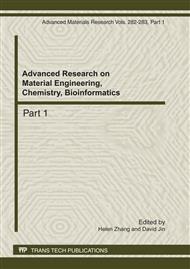p.342
p.346
p.350
p.354
p.359
p.363
p.367
p.371
p.375
Application of Fuzzy Logic in the Network Security Risk Evaluation
Abstract:
This paper introduces the development history of fuzzy logic and its application in network security evaluation. The main content includes fuzzy comprehensive method of evaluating network security risk, and entropy weight coefficient method in network security risk evaluation. At last, it points that the application of fuzzy logic in network security evaluation is a new research field and many problems remain to be solved.
Info:
Periodical:
Pages:
359-362
Citation:
Online since:
July 2011
Authors:
Price:
Сopyright:
© 2011 Trans Tech Publications Ltd. All Rights Reserved
Share:
Citation:


